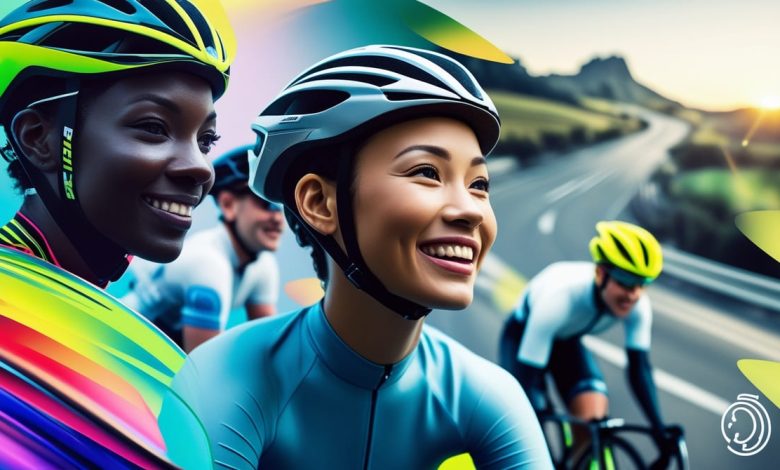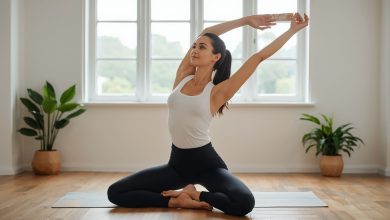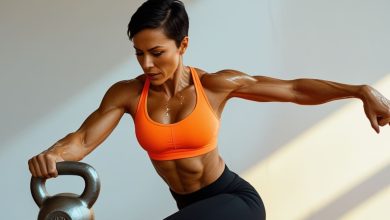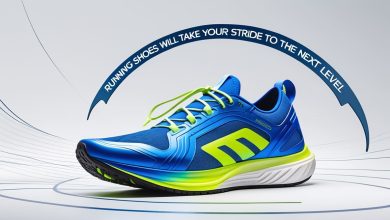
Unlock expert cycling tips to enhance your riding skills, boost comfort, and improve performance on every ride. Whether you’re looking for the right gear, learning essential cycling techniques, or discovering scenic cycling routes, this guide provides all the insights you need for a better cycling experience. Learn how to ride smarter and make the most out of every ride!
Cycling for Beginners
Starting out in cycling can feel intimidating, but with the right approach, you’ll quickly gain confidence. Whether you’re just learning to ride or starting to take cycling more seriously, this guide offers foundational tips to get you on the right track.
Choosing the Right Bike
One of the first steps in becoming a successful cyclist is selecting the right bike. A good bike will make a huge difference in your comfort and overall experience.
- Road Bikes: These bikes are built for speed and efficiency, making them ideal for long-distance rides on paved roads.
- Mountain Bikes: If you’re planning to ride off-road or explore trails, mountain bikes are your best choice.
- Hybrid Bikes: A hybrid bike combines features of road and mountain bikes, making it great for beginners who want versatility.
Adjusting Your Bike for Comfort
Once you’ve chosen your bike, it’s important to ensure it fits you properly. Proper bike fit reduces discomfort and helps prevent injury.
- Seat Height: The saddle should be at a height where your legs are slightly bent at the bottom of each pedal stroke.
- Handlebar Height: Adjust your handlebars to a height that feels comfortable, allowing you to ride without straining your back or wrists.
Learning Basic Cycling Skills
Mastering the basics of cycling is essential for new riders. Here are some key skills to focus on:
- Balancing: Start by practicing in an open, flat space. Focus on keeping your balance while pedaling, which will help you build confidence.
- Braking: Learn to brake smoothly. Avoid slamming on the brakes, which can cause you to lose control. Instead, gradually apply pressure to both front and rear brakes.
- Shifting Gears: If your bike has gears, practice shifting before you need it. Shifting early, especially when approaching a hill, helps maintain a smooth ride.
Cycling Gear for Beginners
Investing in the right gear will make your rides more comfortable and enjoyable. Here’s a basic list for beginners:
- Helmet: Always wear a helmet to protect your head in case of an accident.
- Cycling Gloves: Gloves help protect your hands and improve grip.
- Water Bottle: Stay hydrated during your rides by carrying a water bottle.
- Appropriate Clothing: Choose comfortable clothing that won’t restrict your movement. For longer rides, consider padded cycling shorts for added comfort.
Building Your Stamina
Cycling can be physically demanding, especially for beginners. Start with shorter rides and gradually increase the duration and intensity as your stamina improves.
Finding Safe Cycling Routes
Begin by riding in safe, low-traffic areas such as parks, bike paths, or quiet residential streets. As you gain more confidence, you can explore more challenging routes or even join local cycling groups for group rides.
Cycling Etiquette
Learning good cycling etiquette is essential for both your safety and the safety of others on the road.
- Signal Turns: Always use hand signals to indicate turns to other riders or drivers.
- Stay in Control: Ride at a pace you’re comfortable with, and be aware of your surroundings at all times.
- Yield to Pedestrians: When riding on paths shared with pedestrians, always yield the right of way to walkers or runners.
Staying Motivated
Cycling can be a fun and rewarding experience, but staying motivated is key to making progress. Set achievable goals, such as completing a certain distance or trying out new routes. Celebrate small victories along the way, and most importantly, have fun!
Mastering Cycling Technique
Cycling is not just about pedaling—it’s about doing it efficiently to maximize your energy and comfort. Whether you’re riding for fitness or fun, refining your technique can make a huge difference.
Posture and Form
Proper posture is essential for reducing fatigue and preventing injuries during long rides. A relaxed yet engaged posture helps you maintain better control of the bike while ensuring comfort over time. Here’s how to get it right:
- Upright Upper Body: Your torso should remain straight with a slight lean forward to engage your core muscles. Avoid slouching or bending your back too much.
- Relaxed Shoulders and Elbows: Keep your shoulders relaxed and elbows slightly bent. Tension in the shoulders or elbows can cause discomfort during long rides.
- Engage Your Core: Your core muscles should support your upper body, reducing strain on your lower back and improving balance on the bike.
Pedaling Technique
Pedaling may seem simple, but how you pedal makes a big difference in your efficiency and comfort. A smooth, consistent pedal stroke is key to getting the most out of each rotation.
- Avoid Pushing Too Hard: Rather than forcefully pushing down on the pedals, think about your pedal stroke as a continuous, circular motion. Try to focus on both the downstroke and the upstroke (using your hamstrings and calves) to engage more muscle groups.
- Cadence: Your cadence, or the speed at which you pedal, should be moderate to high, depending on your fitness level. Aim for a cadence of around 80-100 revolutions per minute (RPM), which is ideal for most cyclists.
- Smooth Transitions: Shift gears before you find yourself struggling, especially when approaching inclines. It’s always better to shift earlier than later to avoid putting excessive strain on your muscles.
Shifting Gears
Learning how to shift gears smoothly and effectively can enhance your cycling experience. Shifting before you feel exhausted will help maintain momentum without overexerting yourself. Practice shifting to find the optimal gear for different terrains and inclines.
- Anticipate Changes: Shift gears in advance of approaching hills or when transitioning between terrains to avoid sudden resistance that could slow you down.
- Cadence Control: Maintaining a consistent cadence will allow you to shift gears comfortably without jerking the bike or losing power.
Hydration and Nutrition
Staying hydrated and properly fueled during rides is critical for optimal performance, especially for long-distance cycling. Cycling can be a physically demanding activity, so make sure to replenish fluids and nutrients as needed.
- Drink Regularly: Dehydration can quickly lead to fatigue and reduced performance, so it’s important to drink water at regular intervals, especially during longer rides. Carry a water bottle with you and stop to drink every 15-20 minutes.
- Energy Snacks: For rides over 1 hour, consider packing energy-boosting snacks such as bananas, granola bars, or sports gels. These snacks help maintain stable blood sugar levels and provide the energy needed to power through your ride.
- Electrolytes: Along with water, be sure to replenish electrolytes, which are lost through sweat. Sports drinks, electrolyte tablets, or coconut water are good options.
Rest and Recovery
It’s important not to overexert yourself. Overtraining can lead to injury and burnout, so be sure to listen to your body. Incorporate rest days into your routine to allow muscles to recover and rebuild. Additionally, stretching before and after rides can improve flexibility, reduce muscle soreness, and prevent injuries.
Essential Cycling Gear for Maximum Comfort and Performance
Having the right gear can make all the difference in your cycling experience. Whether you’re commuting, cycling for fitness, or exploring scenic trails, the gear you choose should prioritize both comfort and safety.
Helmet
Safety should always come first when cycling. A well-fitting helmet is your first line of defense in case of a fall.
- Fit is Key: Your helmet should fit snugly but comfortably. It should sit level on your head and not tilt back or forward. Adjust the straps so that they are tight enough to prevent the helmet from moving but not so tight that they are uncomfortable.
- Ventilation: A good helmet should have adequate ventilation to keep your head cool during rides. Look for helmets with multiple vents, especially if you plan to ride in warmer climates.
Cycling Shoes
Cycling shoes help optimize your pedaling efficiency. They are designed to clip into your pedals, allowing you to transfer power to the bike more effectively.
- Clipless Pedals: If you’re serious about cycling, consider investing in clipless pedals and shoes. They allow you to “clip” your feet to the pedals, offering better control and efficiency.
- Comfort and Fit: Cycling shoes should fit snugly but comfortably, with room for your toes to move. A good pair of shoes will prevent foot fatigue and improve power transfer.
Cycling Shorts
A padded pair of cycling shorts is essential for longer rides. The padding in cycling shorts, or “chamois,” helps to reduce friction and chafing, allowing you to ride for longer periods comfortably.
- Chamois Quality: Look for high-quality padding that provides adequate cushioning and moisture-wicking properties to keep you dry and comfortable.
- Fit: The shorts should fit snugly, but not too tight. Avoid loose clothing that could interfere with pedaling or shift while riding.
Bike Gloves
Cycling gloves protect your hands and enhance your grip on the handlebars. They provide extra cushioning for your palms, reducing pressure during long rides and preventing blisters or calluses.
- Breathability: Choose gloves made from breathable materials, such as mesh, to keep your hands cool and dry.
- Padding: Look for gloves with adequate padding in the palm area for maximum comfort during extended rides.
Cycling Glasses
Cycling glasses are essential for protecting your eyes from the sun, wind, and debris while riding. They improve visibility, enhance focus, and reduce eye strain.
- UV Protection: Choose glasses with UV protection to protect your eyes from harmful rays.
- Impact-Resistant Lenses: Look for lenses that are impact-resistant, especially if you plan to ride on rough terrain.
Bike Repair Kit
A basic bike repair kit should always accompany you on rides, especially long ones or trips to remote areas.
- Tools: Essential tools include tire levers, a mini-pump, spare tubes, and a multi-tool with screwdrivers and wrenches.
- Tire Repair: Flat tires are one of the most common cycling issues. Carrying a repair kit with patch kits and replacement tubes will help you avoid being stranded.
Cycling Routes: Exploring Scenic Trails and Urban Paths
Cycling is as much about the journey as it is about the destination. Finding the perfect route can turn an ordinary ride into an unforgettable adventure. Whether you prefer smooth, paved roads, or challenging mountain trails, there’s a cycling route for every type of rider.
Local Cycling Paths and Greenways
If you live in or near a city, take advantage of urban cycling paths and greenways. These dedicated paths often run through parks, along rivers, or through scenic neighborhoods, providing a peaceful environment for cyclists.
- Low Traffic Areas: Look for bike lanes or car-free routes that provide a safe environment for cyclists. These paths allow you to enjoy your ride without worrying about traffic.
- Parks and Trails: Many cities have bike paths that connect to local parks or trails, giving you the opportunity to enjoy nature while staying active.
Mountain Biking Trails
For more adventurous cyclists, mountain biking trails offer the opportunity to ride on rugged terrain, navigate rocky paths, and conquer steep hills. These trails can be found in national parks, forests, and mountain ranges.
- Skill Level: Mountain biking requires a higher level of skill and fitness. Choose trails that match your experience and fitness level, as some trails may be extremely challenging.
- Safety Gear: Protective gear, such as knee and elbow pads, is a must on technical mountain bike trails.
Road Cycling Routes
If you’re more interested in road cycling, seek out routes that challenge your endurance and speed. Long-distance cycling routes often take you through beautiful countryside, coastal paths, and quaint villages.
- Elevation: Look for routes with varying elevation to build strength and stamina. Riding on hilly routes will improve your cardiovascular fitness and help you build powerful legs.
- Group Rides: Many communities organize group road cycling events, providing a great opportunity to socialize while pushing your limits.
Touring and Adventure Cycling
If you’re looking for a longer-term cycling adventure, touring routes may be just what you need. Bike tours allow you to travel through multiple regions or even countries, all while cycling at your own pace.
- Planning and Preparation: Touring requires careful planning, including knowing where you’ll sleep, what you’ll eat, and what gear you need. Make sure to pack light and prepare for different weather conditions.
Cycling is not only a fantastic way to stay active, but it’s also an enriching experience that allows you to explore the world around you. With the right technique, gear, and routes, you can elevate your cycling experience and enjoy every ride to the fullest. Whether you’re in it for fitness, leisure, or a bit of both, there’s always something new to learn and improve upon. So get out there, fine-tune your cycling skills, gear up with the essentials, and hit the road or trail for an unforgettable adventure!



